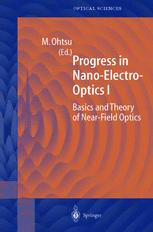

Most ebook files are in PDF format, so you can easily read them using various software such as Foxit Reader or directly on the Google Chrome browser.
Some ebook files are released by publishers in other formats such as .awz, .mobi, .epub, .fb2, etc. You may need to install specific software to read these formats on mobile/PC, such as Calibre.
Please read the tutorial at this link: https://ebookbell.com/faq
We offer FREE conversion to the popular formats you request; however, this may take some time. Therefore, right after payment, please email us, and we will try to provide the service as quickly as possible.
For some exceptional file formats or broken links (if any), please refrain from opening any disputes. Instead, email us first, and we will try to assist within a maximum of 6 hours.
EbookBell Team

4.3
88 reviewsThis volume focuses on fundamental aspects of nano-electro-optics. Starting with fiber probes and related devices for generating and detecting the optical near-field with high efficiency and resolution, the next chapter addresses the modulation of an electron beam by optical near-fields. Further topics include: fluorescence spectroscopy, in which sample molecules are excited by the evanescent surface plasmon field close to metallic surfaces; spatially resolved near-field photoluminescence spectroscopy of semiconductor quantum dots, which will become an essential issue in future electro-optical devices and systems; and, finally, the quantum theory of the optical near-field. This latter theory accounts for all the essential features of the interaction between optical near-fields and nanomaterials, atoms and molecules. Together these overviews will be a valuable resource for engineers and scientists working in the field of nano-electro-optics.